Auto
-

India’s automobile sector is emerging out of COVID-19 headwinds and continuing on its path to becoming the world’s third-largest automobile market. The positive agri economy as well as rising adoption of personal mobility and growth in the used car market is driving passenger category demand. The impending implementation of a scrappage policy is expected to bolster the growth in FY22, especially in truck and bus segment which has been the most hit. FY22 outlook is exciting, where transformed business models like digitisation in dealership models and increased penetration of alternative-energy vehicles will gain prominence along with restoration of normalcy.
Anant Goenka
MDCEAT
-
We are cautiously optimistic about 2021, as we have a very busy and eventful year ahead of us. At the same time, we are watching closely the evolving trends and market development. Our key objective for 2021 will be to strengthen our core business, at the same time transition into a future oriented digitalized company, having a strong focus on de-carbonization and digitization. We have an exciting year in 2021 and the customer can expect positive momentum in the market driven by Mercedes-Benz.
Martin Schwenk
MD and CEOMercedes-Benz India

-

India is and remains an important strategic market for the Volkswagen Group and ŠKODA Auto. The first step in the model campaign will involve ŠKODA AUTO Volkswagen India launching mid-sized SUV models from both ŠKODA AUTO and Volkswagen in 2021. In many ways, this will be a landmark year for the group with the first of our made in India, Made for India SUVs rollout. The pandemic provides us with an opportunity to do something different. In addition, we will also look to introduce premium offerings from different brands at the upper end of the market. And lastly, we will look to expand our dealer footprint across the country while also focusing on ownership experience.
Gurpratap Boparai
MDSkoda Auto Volkswagen India
-
It was overwhelming to see quick recovery in last few months with car market bouncing back strongly, but we should not forget that Covid-19 has caused some permanent damages to the economy and business. Balance sheets had been hit, though it’s a matter of time before we see this negative impact translating into numbers and then it may be took few months/years to recover from this damage. This is why we feel being cautiously optimistic looks like a wise approach mid-term. Fear factor, lower interest rates and possible scrappage scheme will help industry generate demand in 2021 and continue the momentum that has been built in last 6 months.
Puneet Gupta
Associate DirectorIHS Markit

Aviation
-
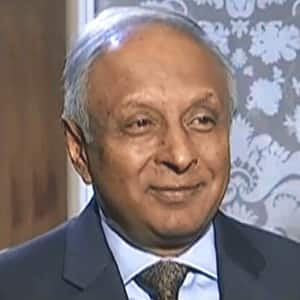
We are glad to see the confidence of the travelling public in our product safety is strong. Revenue trends give us good cause for optimism. Currently, we are flying at 80% of our pre- Covid domestic capacity and hope the government allows us to fly at 100% by early next year. International capacity is a challenge as governments have not been willing to restore scheduled service, so it could lag domestic capacity growth by 8-12 months. Long haul travel may migrate to non-stop from one-stop travel via hubs. US-India traffic is a good example of the trend; many US carriers and Air India now have non-stop flights to and from India. It is critical (for IndiGo) that we are able to deploy our full capacity, without which we are hampered by the liability of carrying unused assets. Thus, removal of restrictions on domestic travel by the Centre and states is critical for the domestic market as is a gradual opening up of international markets.
Ronojoy Dutta
CEO IndiGo
-

Our recent customer survey indicates an upward-moving trend in demand. About 63 percent of our customers would take their next flight by February 2021. The recent news of the coronavirus vaccines to be available has ignited hopes for aviation and travel industries, but a great deal will depend on when a vaccine is made widely available. Travellers are increasingly displaying stronger preference for non-stop travel. Vistara is very well-positioned to offer direct connectivity to long-haul destinations, especially as more wide-body aircraft are expected to join our fleet soon. We remain upbeat about the possibilities and opportunities in time to come.
Leslie Thng
CEO Vistara
-
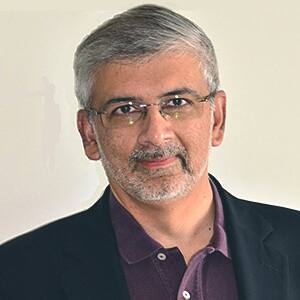
2021 will be the year of reckoning and recovery for the airline industry. Some struggling to survive may not make it as arrears and losses are continuing to mount. Survivors will be weakened in the near-term but will eventually emerge stronger after this trial by fire. Demand will come back by midyear as more people get vaccinated, but some demand, especially business travel, will be gone forever. The Indian travel industry and regulators need to ensure that strides made in touchless and paperless travel sustain, and that old inefficient processes such as stamping of boarding passes does not come back.
Sanjiv Kapoor
Senior Advisor Alton Aviation
Former COO Spice Jet and CSCO, Vistara -

I feel 2021 will be another year of careful regulation by government to ensure the survival of our Indian airlines. The big thing to watch for will be the manner in which we re-open borders to international airlines and end the “unknown to law” so-called “bubble arrangement”. Earlier, many regulations would follow what the FAA or EASA were doing (this is worldwide practice actually), 2020 and specifically because of the MAX, regulators of other countries including our DGCA, will (and should) carry out their own due diligence instead of blindly relying on the FAA and EASA.
Nitin Sarin
Managing Partner of Sarin & Co
Banking
-

After a challenging year for the economy, the financial sector will see recovery and growth in 2021. We are learning to live with the pandemic and economic activity is picking up, while maintaining the necessary safety protocols. With rural, agriculture and MSMEs expected to lead economic revival, banks and financial institutions will lay greater focus on serving the needs of these segments. The accelerated digital adoption over the past few months will continue and shape much of what the sector would do. Having said that, traditional banking will continue to be important, especially in rural and semi-urban India, which are expected to lead the economic recovery of the nation.
Chandra Shekhar Ghosh
MD & CEOBandhan Bank
-
The biggest challenge for the banking sector is to revert to normal after adjusting for the effects of moratorium, onetime restructuring for 26 sectors and SME loans restructuring. Besides recognising the quality of assets, banks will have to learn to adopt to lending to SMEs without guarantee and recommence normal lending that has been constrained in 2020 due to risk aversion. This may have to be done without the cushion of the TLTROs. Raising capital will be at the forefront with a spectre of doubt on Tier 2 bonds for some banks and fresh equity infusion by the government for PSBs.
Madan Sabnavis
Chief EconomistCARE Ratings

-

Banking stocks took the maximum hit on fear of large-scale defaults when COVID-19 struck India. But, RBI's moratorium extension and subsequent intervention has provided relief to borrowers.Collection efficiency has improved in Q2FY21 as cash flow likely improved for clients. Credit growth though continues to struggle at 5-7% and is unlikely to improve; despite the extra buffer being created, banks are likely to see elevated credit cost over next 2-4 quarters. Hence the outlook for the sector still remains challenging. Stock prices have rebounded sharply after panic selling in Q1 leaving limited scope for slide from here on for a year
Siddharth Purohit
Research AnalystSMC Global Securities
-
Emerging from the disruptive pits of recessionary degrowth, the Indian economy will look upwards as normal commercial activity resumes. The credit offtake will be higher than the pre-Covid levels as many of the pain points have been tackled. But a higher level of NPA is likely on vacation of SC stay on reclassification of assets, impacting the bottom line. Low interest rate regime will prevail globally. Redistribution of global supply chains will benefit India. Corporate sector will get a leg up in profitability as the cost cutting business models, particularly WFH, will reduce the operating expenses.
Naresh Malhotra
Director, M/s JC Raval & Co, Chartered Accountants, Ex SBI Executive, Financial Services Consultant.

Economy
-

As the COVID-19 pandemic battered year 2020 is ending and vaccine is nearly ready for a roll out, the prospect for 2021 has become brighter. India like other countries across the globe has also learnt to navigate through the pandemic to keep the economic engine running and 2QFY21 GDP numbers reflects this. 2021 will see GDP growth bouncing back primarily due to the base effect. However, due to the churn caused by the pandemic, post COVID-19 scenario will be quite different with digital platform rapidly expanding its footprint in the Indian economy. However, the medium-term economic outlook remains challenging. The demand destruction caused by COVID-19 has lowered India’s potential rate of growth.
Sunil Kumar Sinha
Principal EconomistIndia Ratings and Research
-
We see 2021 as the year of resurgence for Indian economy and financial services in particular. The impact of COVID should subside with vaccine availability. A sustainable and broad-based recovery is expected, with RBI likely to continue its accommodative monetary stance and government focus on targeted stimulus to revive demand. A glimpse of the recovery was evident in Q2 GDP numbers and the trend is expected to become stronger in future. Companies with differentiated and digitally-led businesses will emerge stronger, constructively disrupting their sectors. Credit availability and institutions’ risk appetite to lend at low interest rates to fuel revival, particularly for the SME sector, will be in focus
Mayur Dwivedi
Head- Strategy, M&A, Investors Relations at Religare Enterprises

-

As the economy swings between good and bad news, we are optimistic and expect India’s GDP to rebound in double digits in FY2022. Reducing infection, lower fatality rates, and the possibility of the release of several highly effective vaccines could improve consumer confidence. Pent-up demand for more elastic discretionary goods, especially among the top 10 income percentile of the population, may spur private investment that has been contracting for five consecutive quarters now. The lagged buoyancy impact of government spending could further boost the economic recovery. That said, despite a quicker rebound, the output levels will likely remain below the pre-pandemic GDP levels until FY2023.
Rumki Majumdar
EconomistDeloitte India
-
There are likely to be continued disruptions at least till end of H1 FY22 given gradual rollout of vaccines. Thus, we will have continued impact on the services sector, especially travel, hospitality and contact services. These would have spill over effects on demand in other sectors too. Under an optimistic scenario, if economy is able to get back to the size it was in FY20 (pre-pandemic) by March 2022, we will experience a growth of 11%+ in real terms next financial year largely owing to lower base effect.
Ranen Banerjee
Leader Economic Advisory Services, PwC India

FMCG
-

The year 2020 has on one hand presented unprecedented challenges and on the other hand has also been transformational in many ways. Our core focus was on innovation and consumer centricity as we catered to the needs of our discerning consumers with several new launches in a span of nine months including immunity-boosting products. Taking cognizance of consumers’ increased focus towards healthy foods, immunity-boosting and hygiene products, while also seeking trusted brands with superior quality, we aim to continue leveraging our product development & digital capabilities and exploring new avenues for growth in these segments.
Pawan Agrawal
CFO Marico
-

As COVID crisis tapers out, hopefully, in 2021, people will usher in a combination of online and offline behaviour, since they have gotten used to making purchases at the touch of a screen. Additionally, health and hygiene will continue to be the top priority for people to boost their immunity levels and ensure they minimise infection risk. People are taking extra precautions to care for their health so they do not have to visit clinics or hospitals unless it’s unavoidable. This means better food & nutrition, health supplements, and immunity boosters will continue to do well. Self-treatment products will do well too, especially for those who suffer from chronic ailments.
Anurita Chopra
Marketing Lead-OH GSK Consumer Healthcare
-

Nutrition and Education are two areas we have identified that consumers have become highly conscious about and are not willing to compromise. That is the reason brands like Kellogg’s which offer fortified, grain-based and nutritious breakfast are seeing a growing affinity and this will continue well into 2021.We looked at becoming future-ready by investing in people capabilities such as research, development, innovation, data analytics, digital marketing and supply chain agility. All of this would help us to cater to changing consumer, shopper & customer behaviour.
Mohit Anand
Managing Director Kellogg South Asia
-

After a dismal performance in Q2 FMCG industry moves into a positive growth space. Bharat (small towns & rural), north zone & small manufacturers will drive growth. Consumer’s preference for affordable offerings continue. Innovation with new products launches will continue dominated by health & hygiene categories.
Diptanshu Ray
Lead-Retail Intelligence South Asia, Nielsen Global Connect
Hospitality
-

Drivable hotels and destinations shall dominate the hotel industry for the year ahead. Motorable holidays shall continue to prevail over destinations that can only be accessed by air travel. Business travel has decreased significantly and as the last 8-9 months have seen, virtual meetings will be the new norm. Conference business has begun but been negligible and this trend will continue in 2021 too. Group travel and religious tourism will be adversely impacted as they will not be in sync with social distancing norms that will be present in the near future.
Aman Nath
Founder and Chairman Neemrana Hotels
-
For the hospitality ecosystem, the upshots due to COVID-19 remain strong owning low Y-o-Y occupancy (~60% in India); however early signs of recovery are visible with occupancy % improving M-o-M by around 10-12%; leisure destinations like Goa, Jaipur, Mussoorie, Mahabaleshwar etc. are also running high occupancy on weekends and holidays (60-70%). There is a dilemma between willingness to travel and not knowing if it’s safe apart from emphasis on cleanliness, contactless transactions. Re-strategizing and reinvention with accelerated adoption of technology and automation is the key to allure the customers back.
Rajat Mahajan
Partner Deloitte India

-

Late 2020 saw a recovery in leisure travel and social MICE. While this helped to kickstart the hospitality industry, two significant demand variables are amiss: big box corporate MICE events & corporate travel and the foreign traveller. While H2 2021 will see restart of corporate travel, foreign traveller will take longer. ICRA expects RevPARs to grow to about Rs 2,500 in 2021, from lows of Rs. 900-1,000 in 2020. The extent of this recovery depends on – the global pandemic contagion, the role out of the vaccination program, and recovery in economy. Return to pre-covid would take about three years.
Pavethra Ponniah
VP ICRA
-
We expect demand to improve considerably in 2021, especially once the vaccine is widely available. Domestic leisure travel, especially to motorable destinations, will continue to show a steady increase going forward, whereas corporate demand will remain subdued, at least in the short term. As a result, we expect India-wide Occupancy and RevPAR to improve to 55-58% and INR 2,500-3,000 respectively, in 2021. We anticipate Mergers & Acquisition activity in the industry to increase in the second half of 2021 as the financial stress goes beyond means for several hotel owners.
Akash Datta
Senior VP HVS

Infra/Real Estate
-

Even as a vaccine for COVID-19 appears to be on the horizon, it does not mean humankind will return to the old definition of normal. So, as social distancing norms as also sanitization and safety precautions continue, the aspects of Work from Home as also Work from Remote will continue to gain ground through end-2020 and into 2021. The thrust to informal gig economy which results in changed parameters for workspaces will impact the requirements of homes cum working spaces. The most important aspect going into 2021 will be the need for real estate to be ‘cost effective’
Niranjan Hiranandani
National PresidentNAREDCO
-
With the government deciding on an infrastructure-led growth strategy to come out of recession, 2021 can be a special year for all infrastructure players. Let the new year usher in a new work culture where arbitration awards are paid expeditiously, contractor payments are settled in time and all infra projects come with a 'deemed clearance' clause whereby any approval, if not provided within a deadline, are 'deemed cleared' so that no project is held up unnecessarily.
Hemant Kanoria
ChairmanSrei Infrastructure Finance Ltd.

-

The coming year will bring this to the fore, and accelerating infra spends will be a crucial imperative – not just to get infrastructure development back on tracks, but also help economic revival and create a strong multiplier effect on employment. The pace of awarding projects – on PPP, annuity as well as EPC modes – needs to accelerate sharply. Asset monetisation would remain a key them to shore up government resources to pump into the infrastructure sector.
Sameer Bhatia
PresidentCRISIL Risk & Infrastructure Solutions
-

Owing to the staggered supply and demand shocks across geographies, combined with challenging economic indicators in fiscal Q2 and Q3, Indian containerized trade has been severely impacted in 2020. Whereas exports have recovered strongly, imports remain subdued. As we continue to navigate foggy conditions, the most recent trends indicate that an overall recovery will begin in the first half of 2021. We see some fundamental changes taking place in logistics and supply chains.
Steve Felder
Managing DirectorMaersk South Asia
Insurance
-

India continues to be an under-penetrated country when it comes to life insurance. We hope introduction of a standardized term product will help address this and make insurance more accessible to the masses. We also hope there will be support from government to reduce goods and services tax (GST) on pure term insurance and make it more affordable - this, we believe will help increase pure term cover which will be a social good. The government and regulator have been supportive in terms of leveraging technology (e.g., video KYC) improving customer's experience and we should see such tech-based processes becoming more prevalent
Vibha Padalkar
MD & CEO HDFC Life Insurance
-
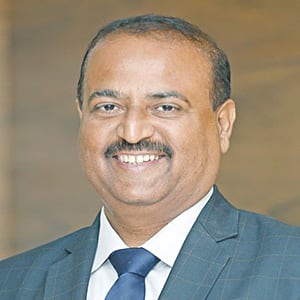
The general Insurance sector faced a lot of uncertainty during the last calendar year with frequent natural calamities coupled with impact of Covid-19. This has brought a lot of learnings for us, which I believe will be the focus areas of the industry going forward. These learnings include being future-ready for the unknown and for customers with relevant offerings to take care of them, strengthen distribution models, simplify claim processes and more importantly work with government to increase penetration of insurance by introducing insurance schemes to cover property, incorporate the missing middle-income group under the ambit of health insurance.
Tapan Singhel
MD & CEO Bajaj Allianz General Insurance
-

For life insurance, product innovation will be key, as there is need to pivot to more relevant solutions and propositions for unique segments we serve. For protection offerings, I expect industry to not only improve outreach by targeting wider customer base but also serving existing customers using newer platforms. We have been speaking a lot about digital as there has been forced virtualisation of consumer operations. The industry has enabled employees and sales digitally, but now I see acceleration in use of digital to reach customers directly and using data and analytics to fine tune propositions. It’s time to drive penetration deeper through virtual mediums.
Naveen Tahilyani
MD & CEO Tata AIA Life Insurance
-
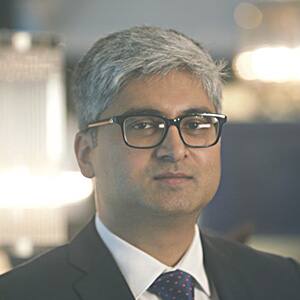
The pandemic has increased awareness about health Insurance and its importance across all age, income and geographic segments. We are likely to see a stark increase in adoption of health insurance in 2021 and many years to follow. We expect retail health insurance to be the growth driver of the Indian insurance industry. The coming years will witness a variety of innovative disease-specific plans, out-patient and wellness products. Payment of premiums in instalments will boost the accessibility of insurance to all.
Anand Roy
MD Star Health and Allied Insurance
IT
-

2021 promises to be a year of continued and strong post-COVID growth revival. Creating frictionless customer experiences, dreaming up new phygital products, transforming the core of the enterprise to cloud, and automation-led cost elimination will be the most important demand drivers. We expect to hire around the world as we do in a high growth year and continue significant investments in talent transformation. Our employees will finally enjoy working from our campuses by mid-year
R Srikrishna
CEOHexaware Technologies
-
The year 2020 has been a test of resilience for us at KPIT and the broader automotive and mobility ecosystem. What’s clear is, the ecosystem is pursuing ahead with its technology vision and investments in order to keep competitive positioning and protect market share in the future. Our clients continue to invest in relevant practices aligned to CASE (Connected, Autonomous, Shared, and Electric). KPIT is in a good position to capture these opportunities. Our pipeline remains strong with few strategic deals. We expect 2021 will be a year of growth, positivity and opportunities to play a meaningful role in this industry transformation.
Kishor Patil
CEO & MDKPIT Technologies

-
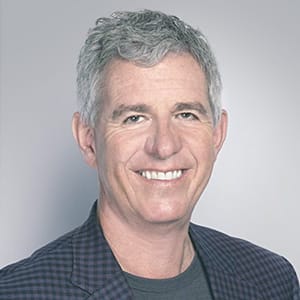
I believe 2021 will be a robust year of possibly historic growth for the IT services industry. Judging by the current record-level pipelines of IT service providers for large transactions in 2021, the customer demand for cost savings and for increasing the pace of digital transformation, along with an enterprise return to discretionary spending, the IT industry could experience an exceptional year. Although companies curtailed most discretionary IT spending when the COVID-19 pandemic hit, those cutbacks were short-lived, and companies now seek to modernize yet reduce operational costs. The IT services demand likely will drive a talent scarcity by mid-2021.
Peter Bendor-Samuel
CEOEverest Group (IT Consultancy firm)
-
2021 will see the emergence of a business environment where data dominates business strategy and automation becomes a native competency, ensuring processes run effectively in the cloud to achieve business outcomes that drive growth. It is the time to revisit values important to us and to challenge our appetite for learning new techniques and ways of conducting business. Success will not be determined by the rate of digital adoption but by the effectiveness of change management and the ability to change behaviours at scale. Change management will increasingly be built-in to solutions, not merely added-on.
Phil Fersht
Founder & CEOHFS Research

MEDIA
-
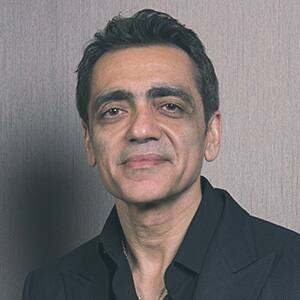
My expectation is that the film industry releases as many movies as possible. In 2018, USD 42 billion was the total box office generated from cinemas all over the world, out of which USD 21 billion went back to studios. And I don't think that money can be replaced by subscription revenues on over the top (OTT) platforms. As for PVR, time is such that we will have to closely look at capital allocation. We will look at cost control. We want to add screens next year. We still could add about 40-50 screens in 2021.
Ajay Bijli
ChairmanPVR
-
In the advertising agency business, we need to be seen and respected by our clients as their knowledge partners. That can only happen when an agency has a system and culture of putting the client interests above its own. The ability and the willingness to collaborate and provide the perfect solution for the brand's needs rather than the one that is easy and profitable to provide (for the agency), is critical for success. These are the fundamentals that need to be revisited and reaffirmed at such a time.
Vinod Nair
MDNetwork Advertising

-

The exhibition industry faces a tough year in 2021. The lockdown has led to disruption of flow of releases, and also seen simultaneous rise in OTT consumption of content, including films. Even in December, there is little clarity if any big Hindi films will release theatrically in Q1 2021. Many cinemas are still shut, and it is feared that over 1,000 single screens may have shut permanently, i.e., to never open again. Content production was halted for several months, and has not started in full swing even now, which means there could be a content shortfall, especially in early 2021.
Shailesh Kapoor
CEOOrmax Media, a media consulting firm
-
In the coming year, we will focus on building a content catalogue. We have ramped our production machinery to be able to create at least 40 shows a year. We believe we can target growth in the youth segment in mass India beyond male and female target audience aged between 20 and 40 and double our direct subscriptions to double-digit figures in the coming year. 2020 has also played a catalytic process in putting us on track to become the first profitable OTT platform, and we seek to break even and become an Rs 150 crore entity with at least 100 original shows by 2021.
Nachiket Pantvaidya
CEOALTBalaji and Group COO, Balaji Telefilms

Metals
-

Demand recovery in steel has happened very well. Inventories in JSW Steel are down by 2.5 lakh tons. Overall in the country, steel inventory has reduced by 3 million tons. There is optimism the trend will continue in 2021. Globally, even as production inches up, prices will hold strong and that is because of production unevenness. This year, China's production was higher YoY, but for rest of the world, volumes were lower. The net difference was reduction by 31 million tons. Next year, while rest of the world will increase by 10%, China's will stabilise. Overall, steel production could rise by 4% in 2021.
Seshagiri Rao
Joint MD & Group CFO JSW Steel
-

2020 witnessed unprecedented challenges due to world's biggest health crisis but Indian economy bounced back because of its resilience. Months preceding Q2 GDP results demonstrated that after initial blip activity picked up and has been a relief. Although Q3, Q4 FY2021 are expected to remain negative, they will see steady improvement. Apart from automobile, infrastructure and construction activities are reviving. Automobiles, in particular, have seen positive run in recent months but systemic issues remain. Extension of PLI scheme for automobile will boost investment and production, helping steel industry, as automobile is one of the key segments. For the New Year’s demand push, much will depend on government spending, which has slowed down significantly. Infrastructure projects’ implementation will increase steel demand and attract foreign investment. Private investment needs a fillip
Dilip Oommen
CEO Arcelor Mittal/Nippon Steel India
-
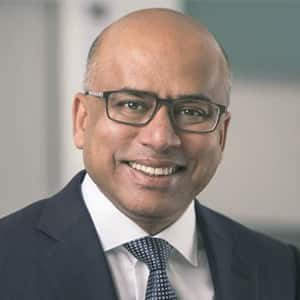
We expect recovery to continue next year, supported by greater consumer confidence due to vaccines, pent-up demand and government investment in infrastructure and construction. De-carbonisation remains key challenge facing our sector and we believe demand for sustainably produced green steel will grow. In fast developing countries like India, steel consumption and production will continue to grow. There is, therefore, urgent need to reinvent steel sector through de-carbonisation. We see massive opportunities to do this through greater recycling, renewable power and breakthrough technologies such as hydrogen. For India, this means developing an effective decarbonisation policy.
Sanjeev Gupta
Chairman Liberty House Group
-

The demand for stainless steel is linked to GDP growth, and India is expecting a V-shaped recovery after Covid-induced woes in first quarter. A lower-than-expected contraction in Q2 GDP indicates economic recovery is on track. Going by this momentum, we hope India will resume growth by March 2021. With significance presence in sectors like construction), auto, energy, and applications like razor blades, and coin blanks, demand for stainless steel is evergreen. Upcoming segments like medical & healthcare, defence & aerospace are fuelling demand. Next year will be crucial for Jindal Stainless. We are evaluating organizational re-structuring of group companies to realize greater synergies and maximise shareholder value.
Abhyuday Jindal
MD Jindal Stainless
Pharma
-

We expect 2021 to be positive for Cipla. The Covid-19 vaccination rollout and restoration of normalcy is what makes us excited. We can connect with our employees, channel partners, vendors, customers and doctors much more closely. The opportunity to grow revenues remains huge. For us, the US pipeline looks exciting. Next 12-24 months we have a pipeline of meaningful products that will help in value creation. The launch momentum in our other key markets India and South Africa looks strong. Respiratory, Chronic and Covid products will continue to drive growth.
Kedar Upadhye
Global CFO Cipla
-
Domestic formulation sales will look better in 2021 due to the low base of 2020. The rollout of Covid vaccine will help other therapies that took a backseat to recover. The Covid related categories of products will continue to grow. There will also be an improvement in demand factors like doctors and hospitals functioning fully. We are going to see more of 'phygital' with both physical and digital coverage improving. This year we reacted by adopting digital, next year digital will take a strategic dimension, also increasing coverage of doctors and hospitals.
Yugal Sikri
MD RPG Life Sciences

-

In 2021, operational performance of Indian companies in India and US will improve. In terms of vaccines, Cadila Healthcare and DRL may benefit. API companies will grow in 2021 at 10-12%, as investment on capex will start getting commissioned. For next six months, I don't see physical inspections happening from USFDA. The product approval momentum in US will continue. Companies with injectable and niche product launches are likely to benefit. The margin expansion of 6-7% QoQ due to cost savings, should continue
Amey Chalke
VP Haitong Securities India
-
The important thing in 2021 is how domestic market will shape up. The growth expectation for domestic formulation market will be mid-single-digit on lower side and low teens on higher side. Recovery will be based on speed of vaccination rollout. The incremental growth in domestic market should offset the impact of cost savings. The US generics market is driven by specific launches. Most companies have lined up launches in 2021. Dr Reddy's - Copaxone, Nuvaring; for Sun Pharma it's about specialty portfolio ramp up and Cipla - niche respiratory launches
Vishal Manchanda
Pharma Analyst Nirmal Bang Institutional Securities

Retail
-

This year 2020 was full of unprecedented challenges, but how you move ahead is a testament of your true strength and character. Our biggest learning from this year is that innovation and agility coupled with resilience are always the key factors that determine how soon a business can get back to growth and regain momentum. As we approach 2021, we intend to take this forward with us and get ready to scale newer heights in the coming year.
Sandeep Kataria
Global CEOBata Brands
-
Since unlock 1.0 in June, retail sector revival has followed a wave pattern, largely tracking pandemic trajectory. During Jun-Aug, going through unlock phases, sales picked up whenever pandemic subsided momentarily and movement restrictions were lifted. During festive season, sales showed a tepid build-up, but gathered strong momentum by Oct-end. As a value fashion retailer focusing on tier 2, 3 towns in North, East India V-Mart has seen strong demand revival during Oct-Dec, buoyed by festive shopping, early arrival of winters, and significant backlog of marriages cancelled during Summer 2020. For retail sector, six-month trend since Unlock 1.0 has been on an upswing, but bouncing back to pre-Covid levels is a question that is still up in the air.
Lalit Agarwal
Chairman & MDV-Mart Retail

-

We are forecasting a better scenario for the year 2021. With a double-digit growth rate online, Metro is looking at strategic online players, also looking at investing in startups in the space of Footwear and Accessories. We are also exploring synergic technology companies that will exponentially grow its online presence. We hope for a favourable situation to turn this into reality.
Farah Malik Bhanji
MD & CEOMetro Brands
-
We are optimistic and resilient about the year 2021 and are hopeful that the situation will not only stabilize but will improve considerably. Some new retail trends that will dominate the Fashion retail sector are technology-driven approach, such as the use of AI, IoT, AR-VR, and adoption of omnichannel strategies.
Deepak Bansal
DirectorCantabil Retail India

ECM
-

In 2021, we expect to see more growth-oriented ECM activity based on issuers’ capex funding needs, supported by positive market fundamentals, good liquidity and stable investor sentiment. If offshore listing guidelines are put in place, it will be a watershed moment for India ECM and hopefully drive more cross-border listing activity. With valuations and aftermarket performance holding up well this year, we expect a constructive environment for robust deal flow across sectors next year
Sumit Jalan
MD & Co-head of India Investment Banking & Capital Markets, Credit Suisse
-
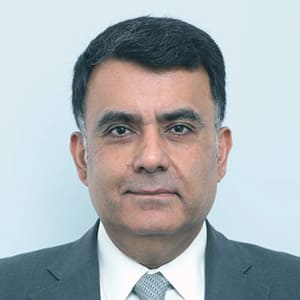
The sectors likely to see issuances could be healthcare, real estate & FIG. The product mix will see more IPOs as compared to CY2020 which had higher proportion of Blocks / Rights/QIP/OFS. We expect the hunt for yield to continue, and hence instruments like REITs and InvITs from quality issuers will continue to find favour with investors. Subject to anticipated regulatory changes, tech/internet segment firms may tap the market slightly earlier than anticipated.
Amitabh Malhotra
Head-Investment Banking, HSBC India
-
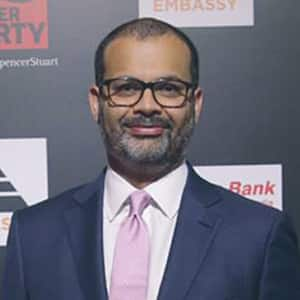
At least the first half of 2021 should continue to see hectic deal activity in the public equity markets, with continued focus in the consumer, healthcare and chemicals sectors. In the second half, we may see several Indian consumer internet and fintech companies looking at accessing the public markets - there is already news of Zomato moving ahead with its proposed IPO - and we expect several other Indian internet companies to follow suit.
Prashant Gupta
Partner & Head (Capital Markets), Shardul Amarchand Mangaldas
-

Sectors that continue to gain post pandemic and those beaten down making a correction to evince investor interest such as speciality chemicals, pharma, healthcare, technology and select financials/real estate. Investors could add dividend stocks/InvITs in search of yield. ECM will also have mega listings in the financials and non-traditional tech/consumer internet space as adoption drives profitability. QIPs from sector leaders looking to expand and for inorganic activity as the agile hunt for the fragile
Ajay Saraf
Head of Investment Banking & Institutional Equities, ICICI Securities
M&A
-
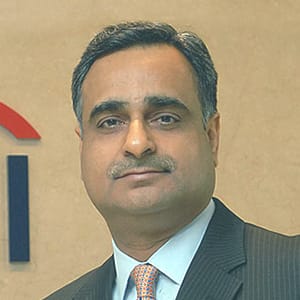
Globally, India is still being seen as a strong long-term growth story. From sectoral perspective, digital and technology-oriented sectors will continue to attract strategic interest, including growth capital. Financial sponsor's activity in sectors such as healthcare, consumer and infrastructure should remain robust. Consolidation could be another key theme. After a spate of recent capital raising, the next big wave of consolidation could come across in FIG space, which still has too many players
Ravi Kapoor
Head of Corporate and Investment Banking Citi India
-
I see distressed M&A in the forefront in 2021 along with the deployment of dry powder by PE who will be pushing for lower valuations. Control deals will be more frequent than before. Attempts to delist will also be made. As India rebounds from its current economic contraction, I believe domestic and cross border m&a will increase from Q2 2021. Globally I feel there will be more strategic consolidation.
Zia Mody
Co-Founder & Managing Partner AZB & Partners

-

We anticipate 2021 to be a year of broad-based M&As with deal flow across sectors. While we expect M&A activity to be anchored largely by sovereign wealth funds and pension funds, 2021 will also see the return of select foreign strategics for the $1bn+ deals. Private equity exits to other private equity may gain momentum. We also expect manufacturing capability investment via JVs, and the largest of deals may emerge from government-led privatisation efforts
Kaustubh Kulkarni
Head of India & South East Asia Investment Banking J.P. Morgan
-
In 2020 lately have seen revival in the M&A world. This will continue into 2021. Innovation and growing size of enterprises and completing the gaps and bringing totality in their portfolio will drive their m&a in pharma, retail, fintech, e-commerce; and vertical and horizontal mergers or acquisition will happen. Scientific discovery, improved business supply chains and logistics, remote connectivity, communications, entertainment and 5G, are growth areas in M&A in 2021.
Shardul Shroff
Executive Chairman, Shardul Amarchand Mangaldas

Jobs
-

Hiring in 2021 will be for forward looking roles that subscribe to new ways of doing business i.e. digital and remote. Old economy roles may not be replaced at all. Many businesses will invest in talent for digital marketing & branding, cloud, cyber security, automation, and ecommerce. We expect consumer goods, logistics & supply chain, automotive (especially electric vehicles), healthcare & life sciences and food to be the big drivers in hiring. Demand will outpace the supply.
Gaurav Chattur
MD-APACCatenon
-
With the job market plummeting in the first half, there seems to be optimism building in Q3 and expect it to continue in the coming quarters. The recovery can be categorized into three segments: essential industries, as they invest in scaling up, non-essential industries that are innovating or adopting new business models and industries that can be tech-enabled and have rapidly adopted it since the pandemic. The renewed focus on different workforce models, seems to be benefiting blue collar jobs and MSMEs to navigate through the uncertain environment.
Ashok Reddy
MD & Co-FounderTeamLease Services

-

There is no second wave of COVID-19 which means that the worst is over. But there are still some sectors like travel, aviation and hospitality that haven’t yet recovered. On the other hand, core sectors are seeing investments from governments coming back. So hiring in these sectors will expand, atleast for the contractual workforce. In the services space, there will be expansion in hiring. In the Q1 of calendar year 2021, India should be close to 95 percent of hiring levels of same period last year.
Aditya Narayan Mishra
CEOCIEL HR Services
-
In 2021, there will be a bounce back in hiring. We saw that the headcount increase across India Inc started happening and this trend will continue. A lot of the hiring plans that could not be implemented in 2020 due to the Coronavirus outbreak will see the light of day next year. Most of the industries, even those worst affected, will open up. This will boost employment opportunities. Companies will start afresh and this will reflect in their 2021 hiring numbers.
Sunil Goel
MDGlobalHunt

Skills
-

In 2021, one of the key shifts will be learning in-the-flow of work which makes more sense in today’s dynamic digital age. With WFH and workplace learning trends embracing technology on larger scale, emerging technologies are transforming businesses and approach towards learning and development. Live or bootcamp style learning programs will be the answer to skilling and learning continuity for working professionals. With everything settling online and remote, time is now for holistic skilling model from edtech companies that can complement professionals to succeed in burgeoning competitive work environments. Additionally, organizations and professionals will have to focus on building niche skills that would become inevitable for business continuity.
Krishna Kumar
Founder & CEO Simplilearn
-

Stakeholders are increasingly focusing on developing the right skills to address the growing skill gap in various sectors in the context of changing industrial landscape defined by new-age technologies and disruptions caused by COVID-19. The focus going ahead will be on having an importance on the learning aspects for skilling with live classes which have been seen to contribute to course completion and smaller batch sizes which contribute to a better level of interaction and learning.
Ramandeep Arora
Founder & CEO edWisor
-

Arrival of the unprecedented pandemic made professionals, organizations, and offline institutes switch gears and accept online as a new viable option to operate, resulting in acceleration of digitization. Such evolving circumstances also created a range of new jobs requiring knowledge of new-age skill-sets, leading employers to look out for talent with domain expertise rather than plain vanilla industry professionals. Therefore, it wouldn't be wrong to say that 2020 has been heavily dominated by technology, and this will continue in 2021. Demand for such industry-driven learning solutions will further propel adoption of e-learning among workforce and students and accelerate overall growth of skilling sector in coming months.
Arjun Mohan
CEO-India upGrad
-

Digital transformation across industries has further been fuelled by the pandemic, shortening the skill shelf-life and transforming how we work and learn. Businesses are building a modern workforce agile enough to learn new technologies in the fast-changing knowledge economy. The workforce is under tremendous pressure to build the skills required for the fourth industrial revolution and is turning to online learning platforms for valuable skilling opportunities. Content in digital and technology skills and hands-on learning such as guided projects continue to have strong demand.
Raghav Gupta
MD India and APAC, Coursera


